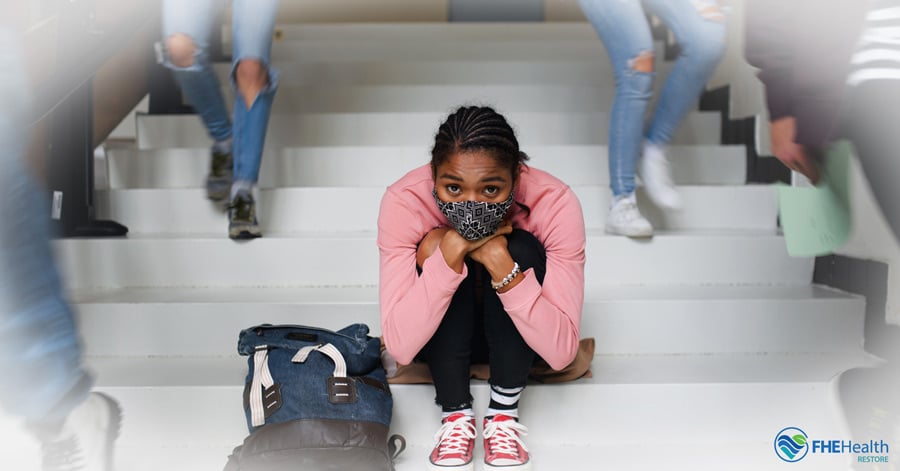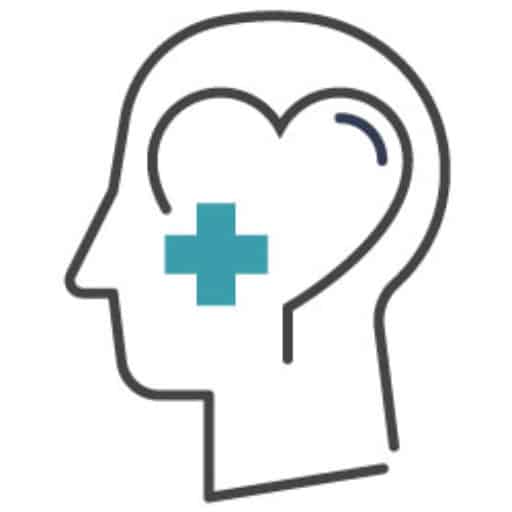Post-pandemic stress disorder (PPSD) reflects the trauma caused by COVID-19 for people around the world. When the pandemic started in the United States, people had to restructure their entire lives in the wake of the virus. The Centers for Disease Control and Prevention (CDC) estimates that 146.6 million people caught the virus between February 2020 and September 2021, leading to 7.5 million hospitalizations and 921,000 deaths.
The pandemic triggered a worldwide health crisis. In 2022, the World Health Organization (WHO) reported that depression and anxiety rates skyrocketed by 25%. Women, young people and individuals with preexisting conditions struggled the most. Unfortunately, shutdowns made it harder for people to seek help.
This trauma caused symptoms similar to post-traumatic stress disorder (PTSD) that lingered after the pandemic ended. Some doctors classify PPSD as a separate condition to better treat their clients.
What Is Post-Pandemic Stress Disorder?
The COVID-19 pandemic was the most significant health crisis since the Spanish flu, creating an unprecedented period in American history. People scrambled as businesses, schools, churches and stores shut down, while hospitals ran out of space for patients. Causes of stress included:
- Worries about getting sick
- Stress from catching symptomatic COVID-19
- Concerns about vulnerable family members
- Lack of supplies, such as hand sanitizer and toilet paper
- Store closures and layoffs
- Lockdowns that forced people to stay at home
When schools switched to online learning, parents had to choose between hiring babysitters and taking weeks off work. Students missed out on socializing with friends, playing sports, attending after-school activities, building relationships with teachers and having graduation ceremonies.
Many people had to sacrifice major life events, such as getting married or taking road trips. Worse still, some missed the chance to see dying loved ones before they passed. Others lost friends or relatives to COVID-19, adding grief to their stress. People who fell seriously ill dealt with the trauma of long-term hospitalization and breathing with a ventilator.
Social media users spread frightening conspiracy theories that steered people away from health precautions, causing more infections and deaths. Depression settled in as the pandemic dragged on for months. As people lost their livelihoods, they questioned whether life existed outside of COVID.
When the pandemic’s effects finally diminished, the frequency of mental health issues led doctors to diagnose people with PPSD, considering the unique impact the pandemic had on the public.
Symptoms of PPSD
Symptoms vary for each person, but they typically have some or all of the following:
- Hypervigilance
- Panic attacks
- Depression
- Insomnia
- Nightmares
- Sudden outbursts
- Irritability
- Anxiety
- Lack of concentration
- Detachment from reality
PPSD symptoms can be nearly indistinguishable from PTSD, but a client might receive a PPSD diagnosis if their symptoms started during or after the pandemic with no other trauma. Pandemic PTSD also manifests in behavior. For example, a person might have a panic attack after watching a movie about a fictional virus or obsessively sanitize their home to kill germs.
Coping Strategies for PPSD
Unhealthy coping strategies include smoking, overeating, abusing substances, self-harm, isolation and avoiding safe public areas. If you’re struggling with PPSD, try replacing your habits with these techniques:
- Exercising. This improves brain functioning and burns off energy that causes anxiety and racing thoughts.
- Journaling. Writing about your feelings helps you release emotions instead of bottling them up. This strategy allows you to examine your thoughts more objectively.
- Changing your environment. Simply rearranging your furniture creates a new environment that your brain doesn’t associate with rumination.
- Going outside. Spending time in nature can free your mind from repetitive thoughts. Walking around and getting sunlight can also relieve depression symptoms.
- Talking to friends. If you’re worried about in-person gatherings, you can stay in touch through social media, phone calls and text messages.
- Finding hobbies. Working on a project takes your mind off your worries. You might even discover a new talent that you can teach others.
If these options don’t work, you should seek professional treatment.
Treatment Options for PPSD
An underlying mental disorder can contribute to pandemic PTSD. An anxious person may be predisposed to having flashbacks and panic attacks. Similarly, depressed people often experience fatigue, guilt and sadness, while people with substance abuse disorders increase their drug use. Counselors treat these issues alongside PPSD to alleviate symptoms as much as possible.
However, many people had no mental health issues before the pandemic. Therapy helps them deal with these newfound symptoms, which often confuse and frighten clients. People who lost loved ones to the pandemic may need additional grief counseling.
For any case, PPSD and mental health treatment options include:
- Cognitive behavioral therapy (CBT). This program teaches clients to challenge their thoughts instead of assuming every negative belief is true. They learn about emotional regulation and view situations more objectively.
- Talk therapy. Clients discuss their issues to process trauma and discuss healthy coping mechanisms.
- Medication. Doctors prescribe medication to relieve PPSD symptoms, such as depression, anxiety, low appetite and insomnia, making it easier for clients to practice what they learn in counseling.
- Exposure therapy. As clients gradually expose themselves to triggering situations, such as visiting a doctor’s office, their anxiety starts to decrease when they realize nothing will attack them.
If a person has turned to substance abuse, they may need a dual diagnosis program that treats both disorders simultaneously. People who need 24-hour care start with a residential program that provides a room, three meals a day, classes and therapy. Afterward, they move to outpatient care, which offers the same treatments but without the overnight stay.
Why Is It Important to Seek Help?
Instead of living in the moment, people with PPSD live as if the pandemic had just started. They stop enjoying their lives when they obsess over catching a virus. Insomnia, depression, panic attacks and flashbacks interfere with their work and life responsibilities, making ordinary activities a burden. People with severe cases start to wish they hadn’t survived the pandemic.
With counseling, they can learn how to live in the moment instead of worrying about the future. They survived: now it’s time to move on. Optimism replaces their fears that they’ll die if they venture into public spaces. Those who lost loved ones begin to process their grief and honor their memories. Ultimately, therapy restores their quality of life.
If your stress hasn’t ended after the pandemic, you might be experiencing PPSD. Restore Mental Health treats anxiety, trauma and depression alongside substance abuse. Our programs include inpatient and outpatient rehab, neuro rehab and specialized therapy for first responders. Contact us to speak with one of our counselors.



